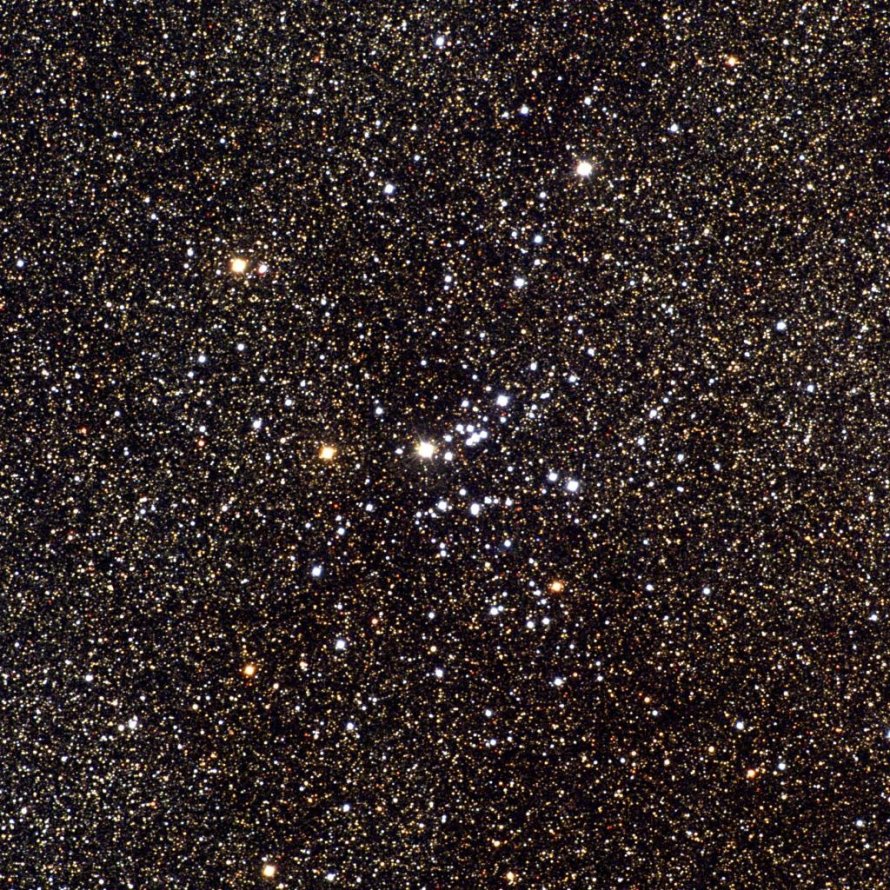M25 (IC 4725)
Messier 25 (IC 4725) is an open cluster located in the constellation Sagittarius, in the Orion Arm of the Milky Way Galaxy in the Local Group of galaxies. M25 is 2000 light years away from Earth.
M25 is best viewed during late summer, is magnitude 4.9, and can be viewed with naked eye. M25 is 36' in apparent size. For reference, the full moon is 30'.
Observing difficulty: Easy
- Name:
- Type:
- open cluster
- Constellation:
- Sagittarius
- NGC or IC:
- IC 4725
- Magnitude:
- 4.9
- Viewing:
- naked eye
- Size:
- 36'
- Distance (light years):
- 2000 LY
- RA:
- 18h 28.8m
- Dec:
- -19 17'
- Season:
- late summer
- Milky Way location:
- Orion Arm
- Galaxy group:
- Local Group
- Messier Marathon #:
- 94
* The naked eye can see up to magnitude ~7-8 objects under ideal dark sky conditions.
A Bright Open Star Cluster in Sagittarius
Located in the rich star fields of Sagittarius, Messier 25 (M25) is a prominent open cluster known for its brightness and easy visibility from Earth. This article explores the discovery of M25, its physical characteristics, its apparent magnitude, and guides amateur astronomers on how to locate and observe this delightful celestial object.
Discovery and Observation
M25 was discovered by French astronomer Philippe Loys de Ch?seaux in 1745. However, it was later independently cataloged by Charles Messier in 1764. Approximately 2,000 light-years away from us, M25 offers an appealing sight to both amateur and experienced astronomers alike, especially in a small telescope.
Physical Characteristics and Magnitude
M25 is an open star cluster, which means it is a loose collection of stars that were formed from the same giant molecular cloud. The cluster spans roughly 19 light-years and is composed of over 60 known stars. At the center of M25 is a notable Gamma Sagittarii variable star, U Sagittarii, which fluctuates in brightness over a period of 6.74 days. The cluster itself has an apparent magnitude of 4.6, making it one of the brighter open clusters in the Messier catalogue. Although it is faintly visible to the naked eye under excellent conditions, a pair of binoculars or a small telescope significantly enhances the viewing experience.
Astronomical Significance
Open clusters like M25 are of great interest to astronomers. As all stars within the cluster are formed from the same dust cloud, they have the same age and composition, which makes them perfect laboratories to study stellar evolution. Observations of M25 help astronomers understand the physical processes that influence the lives of stars.
Finding and Viewing M25
M25 is located in the constellation Sagittarius, which is best observed during the summer months from the Northern Hemisphere. To locate M25, first locate the "teapot" asterism of Sagittarius. The cluster is situated northwest of the tip of the teapot's spout. To the naked eye, M25 appears as a faint, fuzzy patch. Binoculars will reveal it as a hazy spot with a few discernible stars, while a small telescope will resolve many of its member stars, providing a truly spectacular view.



